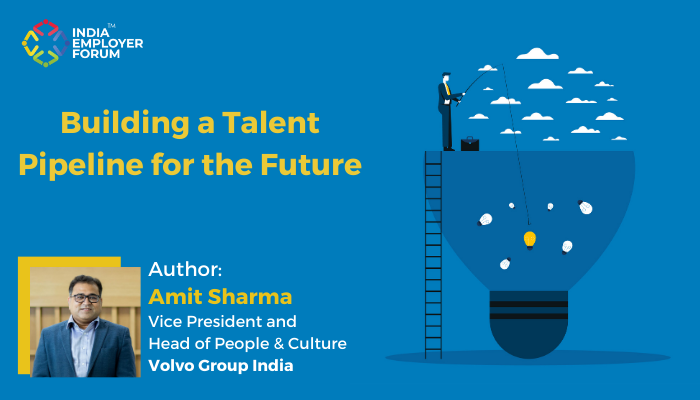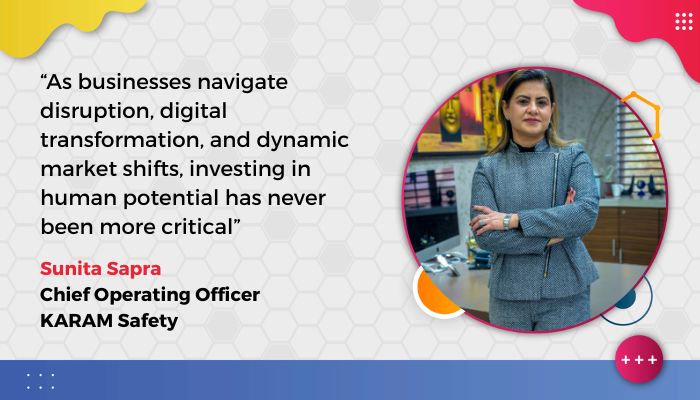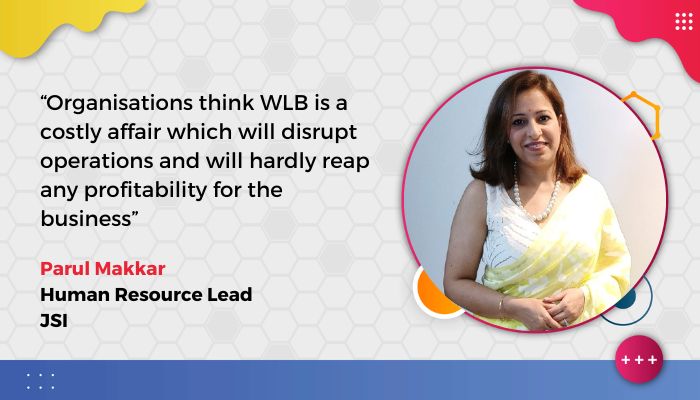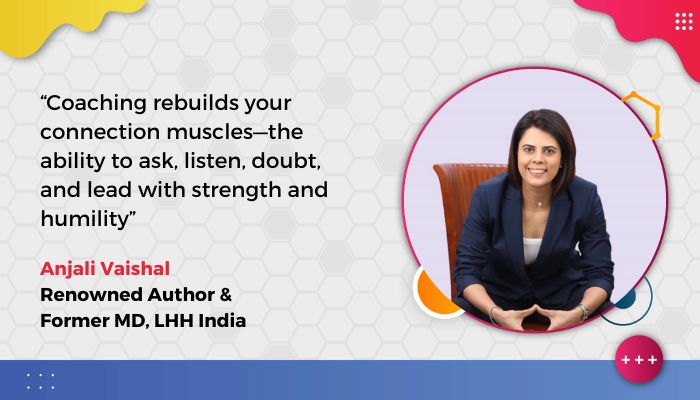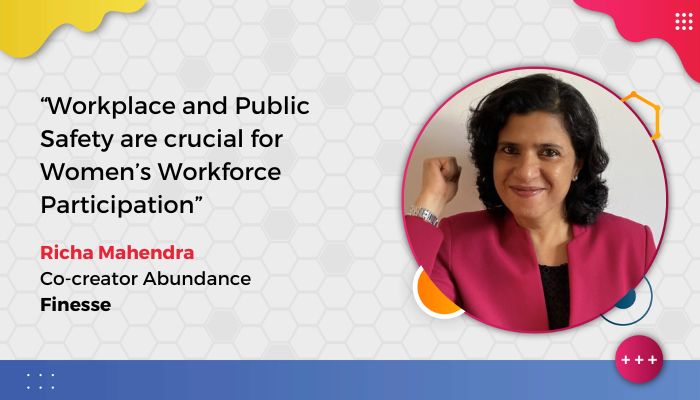Organizations must carry the mantle of bridging the talent gap and work towards developing a higher order of skills among the workforce
The business ecosystem has changed dynamically owing to the exponential rise in automation powered by new-age technologies such as cloud, robotics, IoT, and artificial intelligence. The rapid espousal of this digital transformation across industries is due to the immediate advantages visible in the form of increased productivity, improved efficiency, and heightened safety. FY2022, was a spectacular year for India’s technology industry which recorded the highest-ever growth of 15.5% to reach $227 billion in revenue. While change is the only constant and technological advancements were expected, the pandemic accelerated the pace of change and has left us in a situation where we must review and recalibrate our responses to be better prepared for the future of work. A recent report from McKinsey Global Institute indicated that automation is expected to take over nearly 800 million jobs by 2030. The coming of age of automation will certainly replace several jobs but at the same time, it is anticipated to create new work opportunities across industries and trigger the rise of entrepreneurial ventures and startups in the coming years. It also offers opportunities for course correction where we can leverage technology to target a higher order of skills among our workforce.
Nurture the talent of the future
As organizations engage in micro-transformation projects across different business verticals to revamp existing protocols and solutions, they are introducing re-skilling programs to develop technical competencies. AI-based tools are the topmost priority with respect to the adoption of future-ready technologies. Some of the key aspects to keep in mind as we prepare for the future are as follows:
1. Integrate talent management
There is a growing need for human resources to work across businesses to understand their skill requirements and map these skills with the interests and capabilities of the workforce. The HR function must focus on talent strategy, performance management, learning and development, and succession planning. HR function needs to be the binding force between the employer, employee, institutes of Higher Learning, and government bodies to delineate the needs of the industry and map out a strategy of collaboration among all the stakeholders.
2. Industry awareness and on-the-job training
India’s demographic dividend, comprising of a young and agile workforce, is an asset yet we struggle with significant skill gaps to the extent that (as per some reports) only about 5% of the workforce is formally skilled. This dissonance between the needs of the industry and the skills of the workforce is attributable to the information asymmetry with respect to opportunities, pathways, and the lack of access to training opportunities, which is leading to an aspiration mismatch amongst the youth. Organizations need to bridge this gap by increasing career path awareness and providing targeted training in advanced technical skills and softer transferable skills through internships and apprenticeships will lay a strong foundation for the future of work.
3. Invest in Learning & Development Activities
Industry 4.0 is synonymous with digital technology that establishes interconnectivity between physical and digital spaces through the Internet of Things (IoT), big data & analytics, cloud, autonomous robots, artificial intelligence, machine learning, and AR. Organizations require specific skill sets to cater to the needs of these new technologies. There is a tech talent gap that is beginning to impact the bottom line of organizations. In a bid to mitigate this skill deficit, businesses must invest in the upskilling and reskilling of their workforce. This will help them to prepare for the future and thus build organizational resilience to economic challenges and recently witnessed trends such as the Great Resignation, quiet quitting, and of course the all-encompassing digital transformation.
4. Cultivate long-term engagements with employees
There is a rise of the gigonomy with (according to some estimates) 7.7 million workers currently engaged in the gig economy, which is expected to expand by 23.5 million by 2029-30. The way Gig economy is working today, these gig workers lose out on the benefits of a stable and long-term engagement with an organization. This taxi-cab relationship impacts the workforce’s stability, necessitating dedicated investments in time and effort on hiring, not to mention the additional costs. A long-term engagement with employees is good for business as it minimizes hiring costs which can then be diverted to upskilling and reskilling as per the organization’s needs. It also offers a sense of stability to the employee as well as the organization as long-term employees tend to become the face of the organization as customers associate companies with the people who engage with them.
5. Focus on developing a higher order of skills
The goal of all developments in technology must focus on leveraging the cognitive abilities of humans and spare them from engaging in mind-numbing repetitive tasks. As per current data a staggering 78 % of gig work is in medium-skilled to low-skilled jobs, while a relatively insignificant 22% is in the high-skilled category. As automation takes root a lot of the low-skilled roles will get dissolved, therefore, as organizations we must also strive to push the envelope to engage in a higher order of work that involves decision-making, creativity, teamwork, and interpersonal skills. For instance, the IT industry in India comprises of IT services and BPOs. At the same time, the US, Israel, and several European countries rank in the lists of leading software developers. As a nation, we must move forward from the jobs we took on in the early 1980s with the IT boom to become the ‘outsourcing capital of the world’. As organizations embrace new technology for routine tasks, they must hone the skills and abilities of their workforce to engage in higher-order skills, such as problem-solving, critical thinking, goal setting, and decision-making, all of which are involved in the creation and development of new products and processes.
Conclusion
The changing world of work mandates a greater focus on skill development, talent management, and business agility. The ongoing digital transformation has led to the creation of new roles that revolve around navigating new technologies. The current crop of workers are not equipped with the requisite skills hence it has become imperative for organizations to invest in L&D activities to bridge the widening skill gap. The human resources department must engage in continuous assessment of learning needs within the organization to organize interventions for the upskilling and reskilling of the workforce. Business must continue to evolve to upgrade and develop a higher-order of cognitive skills to keep pace with the new business environment for in the words of Roy T. Bennett, ‘’It’s only after you’ve stepped outside your comfort zone that you begin to change, grow, and transform.”
Author: Amit Sharma, Vice President and Head of People & Culture, Volvo Group in India
About the Author
Amit Sharma is Vice President and Head of People & Culture at Volvo Group in India. He is also a Director on the Board of Volvo Financial Services India. In a career spanning over two decades, he has earlier worked across various HR roles of which more than a decade has been in leadership positions with top-of-the-line organizations, in a diverse set of industries such as Indian Oil, Johnson & Johnson, Philips and TE Connectivity.
Amit has received various internal and external recognitions for his work in HR and has been speaking on HR topics in various external forums. Amit is an MBA (HR) from UBS, Panjab University, Chandigarh and an Engineering Graduate from Thapar Institute of Engineering & Technology, Patiala. He has also done Diploma in Training & Development from ISTD New Delhi, is certified OD Practitioner from ISABS New Delhi and a certified Coach.
He has been Vice President of the National HRD Network, Bangalore Chapter for the year 2019-21 and is currently a member of CII’s National Committee on Industrial Relations. He is also on the Academic Board of various universities & institutes and has also been a teacher in B-Schools as Guest Faculty.
You might also be interested to read: How to be Happy in the Workplace

